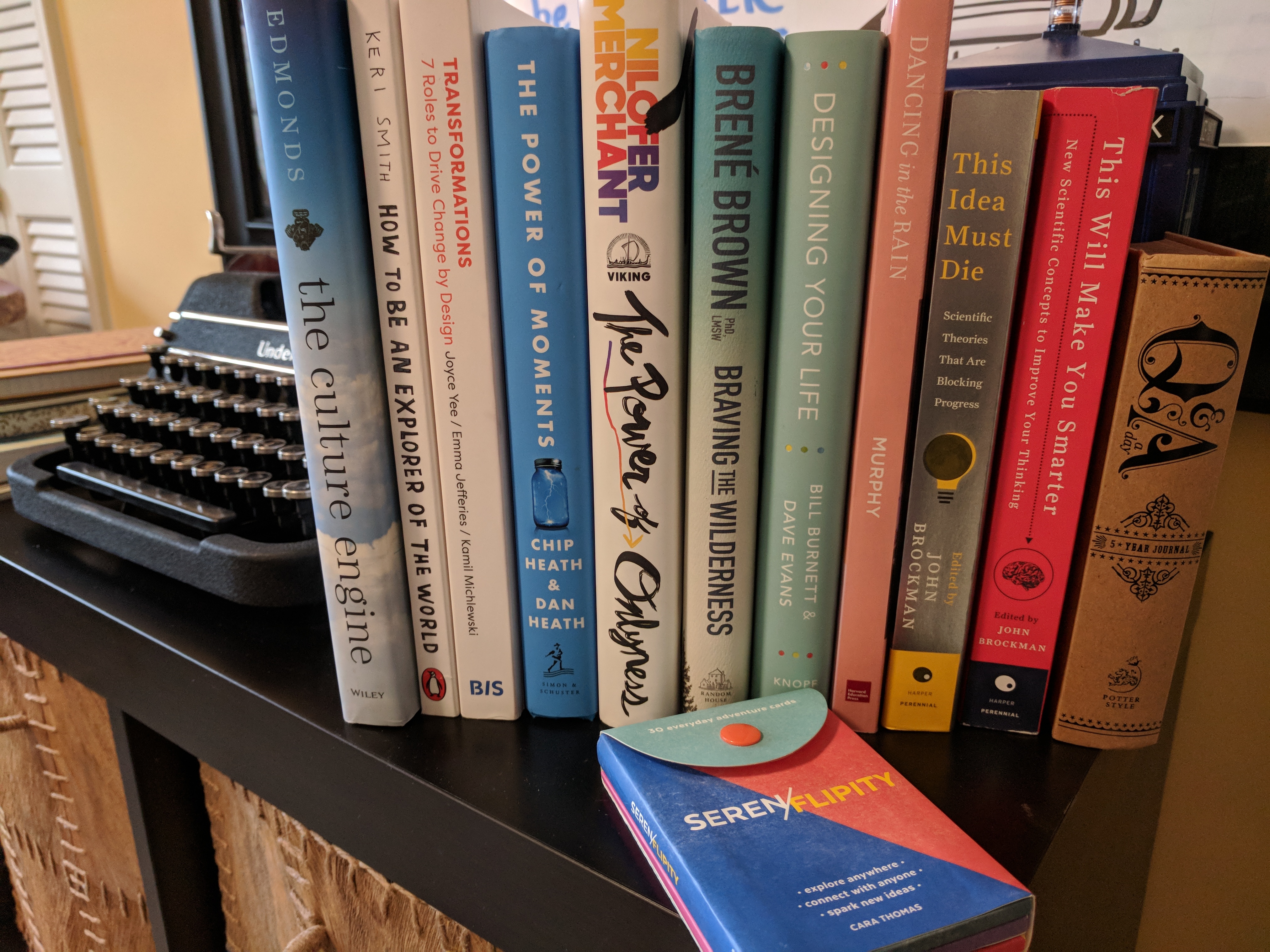
I wrapped up 2017 watching the documentary, Losing Sight of the Shore which is about six women who have dreams to accomplish and demons to conquer. The movie's message is that “everyone has their own pacific to cross.” Each team member faces the unknown and struggles with the challenges of being at sea for months as they move from California to Hawaii to Samoa to Australia on the Coxless Crew women’s rowing team. What struck me most about the documentary was that each member of the crew faced the voyage in a different way and each person's inner journey was unique based on their personal goals.
As I welcome in 2018 and the promise of new adventures and experiences, I also like to look back on the books that were doses of inspiration during 2017. These prescriptions helped me in both my personal and work life to cross my own pacific and make meaning out of each day. I hope that this reading prescription will help you in your 2018 journey around the sun. Enjoy!
The Human Condition
- The Power of Onlyness: Make Your Wild Ideas Mighty Enough to Dent the World, Nilofer Merchant
- Each of us stands in a unique place and we can use our distinct experiences to get our ideas out into the world.
- Designing Your Life: How to Build a Well-Lived, Joyful Life, Dave Evans
- Learn strategies for applying design thinking to redesign your life.
- Option B: Facing Adversity, Building Resilience, and Finding Joy, Sheryl Sandburg and Adam Grant
- We don't always get our first choice in life. Option B has powerful stories of moving forward through difficult circumstances.
- The Power of Moments: Why Certain Experiences Have Extraordinary Impact, Chip and Dan Heath
- Create powerful moments in your life through the four elements of elevation, insight, pride and connection.
- Q&A a Day, 5 Year Journal Diary
- Answer a question a day for five years and create a diary of your growth over time.
- Braving the Wilderness: The Quest for True Belonging and the Courage to Stand Alone, Brene Brown
- A thought provoking book about making connections in a disconnected world.
- Dancing in the Rain: Leading with Compassion, Vitality and Mindfulness in Education, Christopher Germer
- Overcome stress at work by developing inner strength through mindfulness and self-compassion.
- How to be an Explorer of the World: Portable Life Museum, Keri Smith
- Known for her Wreck This Journal series, Keri Smith brings you a wealth of activities to help you explore the world around you. Start each day with observing and documenting the world as if you've never seen it before.
- Serenflipity: 30 Everyday Adventure Cards
- Grab this card deck and have a new adventure everyday!
- A Gentleman in Moscow: A Novel, Amor Towles
- Count Alexander Rostov is on house arrest in a hotel for thirty years but he manages to make each day an adventure. This is an inspiring story for anyone who faces constraints in life.
- Culture Engine: A Framework for Driving Results, Inspiring Your Employees, and Transforming Your Workplace, S. Chris Edmonds
- Success in the workplace starts with a culture shift. Learn how to apply the culture engine framework for transformative change.
- Big Wins, Small Steps: How to Lead for and With Creativity, Ronald Beghetto
- Develop creativity in your school with a small steps approach.
- Rebels at Work: A Handbook for Leading Change from Within, Carmen Medina
- Learn how to push the envelope at work and get better results without getting into trouble.
- Transformations: 7 Roles to Drive Change by Design, Joyce Yee and Emma Jeffries
- Through case studies from organizations around the world, the authors introduce us to 7 roles that drive change and innovation.
- Stretch: Unlock the Power of Less and Achieve More Than You've Every Imagined, Scott Sonenshein
- Learn to live within constraints and become a creative problem solver.
- This Idea Must Die: Scientific Theories That Are Blocking Progress, John Brockman
- This Idea Will Make You Smarter: New Scientific Concepts to Improve Your Thinking, John Brockman
- Explore new ideas from great thinkers in the Edge book series as well as on the Edge.org website.
 How might we cultivate, spread and scale a culture of innovation throughout our classrooms and schools to catalyze people for positive change? This is the powerful question that we’re exploring in my school district,
How might we cultivate, spread and scale a culture of innovation throughout our classrooms and schools to catalyze people for positive change? This is the powerful question that we’re exploring in my school district,